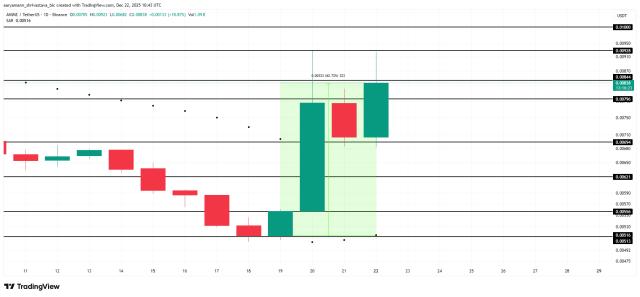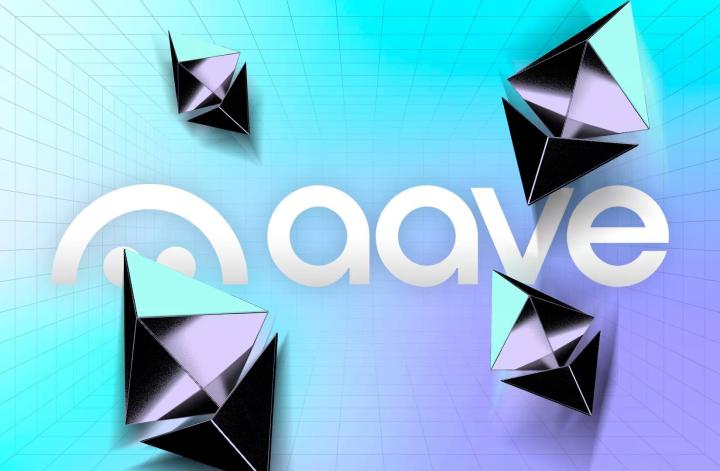Author: @danielesesta
Compiled by: Bai Hua Blockchain
Artificial intelligence is developing rapidly. Large language models (LLMs) are providing powerful support in various fields, from chatbots to multi-step transaction automation in DeFi (Decentralized Finance), with an increasingly wide range of applications. However, the high cost and complexity of large-scale deployment of these models remain a major obstacle. In this context, Deepseek R1, a brand-new open-source AI model, has emerged, offering powerful reasoning capabilities and lower costs, opening the door to millions of new users and application scenarios.
This article will discuss the following:
1) The innovations Deepseek R1 brings to the open-source AI inference field.
2) How reducing inference costs and flexible licensing models can drive wider adoption.
3) Why Jevons' paradox suggests that as efficiency improves, usage (and associated costs) may increase, but this is still an overall positive for AI developers.
4) How DeFAI can benefit from the increasing accessibility of AI in financial applications.
1. Deepseek R1: Redefining Open-Source AI
Deepseek R1 is a newly released large language model, trained on a broad corpus of text, with a focus on optimizing reasoning capabilities and contextual understanding. Its key features include:
• Efficient architecture
By adopting next-generation parameter structures, Deepseek R1 provides near-state-of-the-art performance on complex reasoning tasks, without relying on massive GPU clusters.
• Lower hardware requirements
The model design supports running on a smaller number of GPUs or even advanced CPU clusters, making it more suitable for startups, individual developers, and the open-source community.
• Open-source licensing
Unlike many proprietary models, Deepseek R1 uses a permissive licensing agreement, allowing businesses to directly integrate it into their products, accelerating application and plugin development, as well as fine-tuning for specific needs.
This push for usability and openness is similar to the early development trajectories of open-source projects like Linux, Apache, and MySQL - ultimately driving exponential growth in the technology ecosystem.
2. The Significance of Lower-Cost AI
1) Accelerating Adoption
When high-quality AI models can run at lower costs:
SMEs: Can deploy AI-driven solutions without relying on expensive proprietary services.
Developers: Can freely experiment, from chatbots to automated research assistants, with rapid iteration of new applications, without budget overruns.
Global Growth: Enterprises in emerging markets can more smoothly introduce AI solutions, bridging gaps in industries like finance, healthcare, and education.
2) Driving the Democratization of Inference
Reducing inference costs not only increases usage but also democratizes inference:
Localized Models: Small communities can leverage Deepseek R1 to customize training on specific language or domain corpora (e.g., medical or legal data).
Modular Plugins: Developers and independent researchers can create advanced plugins (e.g., code analysis, supply chain optimization, or on-chain transaction verification) without licensing constraints.
Overall, cost savings enable more experimentation, accelerating innovation across the entire AI ecosystem.
3. Jevons' Paradox: When Efficiency Leads to Increased Consumption
1) What is Jevons' Paradox?
Jevons' paradox states that improvements in efficiency often lead to increased resource consumption, rather than reduction. This phenomenon was initially observed in the use of coal: when a process became cheaper or easier, people tended to increase their usage, offsetting or even exceeding the savings from the efficiency improvement.
In the context of Deepseek R1:
Lower-cost models: Reduced the hardware burden, making running AI more economically viable.
Result: More businesses, researchers, and enthusiasts started running AI instances.
Ultimately: While the cost per individual instance is lower, the total computational resource usage (and associated costs) may increase due to the influx of new users.
2) Is this a bad thing?
Not necessarily. The significant growth in the usage of AI models like Deepseek R1 reflects their successful adoption and brings more applications. This trend drives:
Ecosystem Growth: More developers contributing to open-source code functionality, bug fixes, and performance optimizations.
Hardware Innovation: GPU, CPU, and specialized AI chip manufacturers competing on price and efficiency to meet the surging demand.
Business Opportunities: Builders in areas like analytics, workflow orchestration, and specialized data preprocessing will benefit from the surge in AI usage.
Therefore, while Jevons' paradox suggests that infrastructure costs may rise, for the AI field as a whole, this is a positive signal, fostering an innovative environment and driving breakthroughs in cost-effective deployment (e.g., more advanced compression techniques or offloading tasks to specialized chips).
4. Impact on DeFAI
1) DeFAI: The Convergence of AI and DeFi
DeFAI combines Decentralized Finance (DeFi) with AI-driven automation, enabling intelligent agents to manage on-chain assets, execute multi-step transactions, and interact with DeFi protocols. This emerging field directly benefits from open-source, low-cost AI models, because:
24/7 Autonomous Operation: Intelligent agents can continuously monitor DeFi markets, cross-chain operations, and rebalance positions. Lower AI inference costs make these agents economically viable for round-the-clock operation.
Unlimited Scalability: If thousands of DeFAI agents need to run simultaneously for different users or protocols, low-cost models like Deepseek R1 can effectively control the operational costs.
Customization Capabilities: Developers can fine-tune the open-source AI based on DeFi-specific data (e.g., price feeds, on-chain analytics, governance forums) without bearing high licensing fees.
2) More AI Agents, More Financial Automation
With Deepseek R1 lowering the AI barrier, the DeFAI field is experiencing a positive feedback loop:
Surge in Agent Deployment: Developers create specialized bots (e.g., yield farming, liquidity provision, NFT trading, cross-chain arbitrage).
Efficiency Improvements: Each agent can optimize financial liquidity, potentially driving overall growth in DeFi activity and liquidity.
Industry Expansion: More complex DeFi products emerge, such as advanced derivatives and conditional payment protocols, all powered by the readily available AI.
The ultimate result: The entire DeFAI domain forms a virtuous cycle - user growth and agent intelligence mutually reinforce, driving further flourishing of the DeFi ecosystem.
5. Outlook: Positive Signals for AI Developers
1) Thriving Open-Source Community
With Deepseek R1 open-sourced, the community will be able to:
Quickly fix bugs,
Propose reasoning optimization approaches,
Create domain-specific forks (e.g., finance, legal, medical).
Collaborative development will bring continuous model improvements and spawn related ecosystem tools (e.g., fine-tuning frameworks, model deployment infrastructure).
2) New Monetization Paths
AI developers, especially in the DeFAI field, can break away from the traditional pay-per-API-call model and explore more innovative approaches:
Hosted AI Instances: Provide enterprise-grade Deepseek R1 hosting services with user-friendly management panels.
Service Layer: Integrate advanced features (e.g., compliance checks or real-time intelligence) for DeFi operators, building on top of the open-source models.
Agent Marketplace: Host specialized agent configurations, each with unique strategies or risk preferences, through subscription or performance-based fees.
As the underlying AI technology can support millions of concurrent users at a manageable cost, these business models will thrive.
3) Lower Barriers = Larger Talent Pool
With Deepseek R1's reduced hardware requirements, more global developers will be able to experiment with AI technology. This influx of diverse talent will:
Inspire innovative solutions to real-world and crypto-specific challenges,
Inject new ideas and improvements into the open-source community,
Unlock the potential of global developer communities previously excluded due to high computational costs.
6. Conclusion
The launch of Deepseek R1 marks an important transformation: open-source AI no longer requires high computational resources or licensing fees. By providing powerful inference capabilities at a lower cost, it paves the way for a wider range of applications - from small development teams to large enterprises. While the Jevons paradox suggests that infrastructure costs may rise due to increased demand, this phenomenon is beneficial for the AI ecosystem, driving hardware innovation, community contributions, and the development of next-generation applications.
In the DeFAI domain, AI agents coordinate financial operations on decentralized networks, with far-reaching implications. Lower overhead means more complex agents, wider accessibility, and continuously expanding on-chain strategies. From yield aggregation to risk management, these advanced AI solutions can run continuously, unlocking new paths for cryptocurrency adoption and innovation.
Ultimately, Deepseek R1 demonstrates how open-source technology can catalyze the development of an entire industry - including AI and DeFi. As we move towards the future, AI will no longer be a tool for the few, but a fundamental element of everyday finance, creativity, and global decision-making, driven by open-source models, cost-effective infrastructure, and the power of strong communities.







